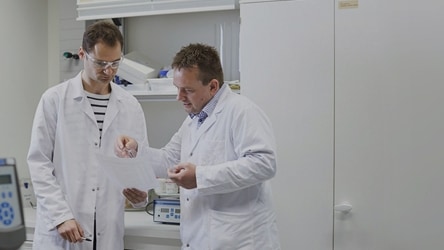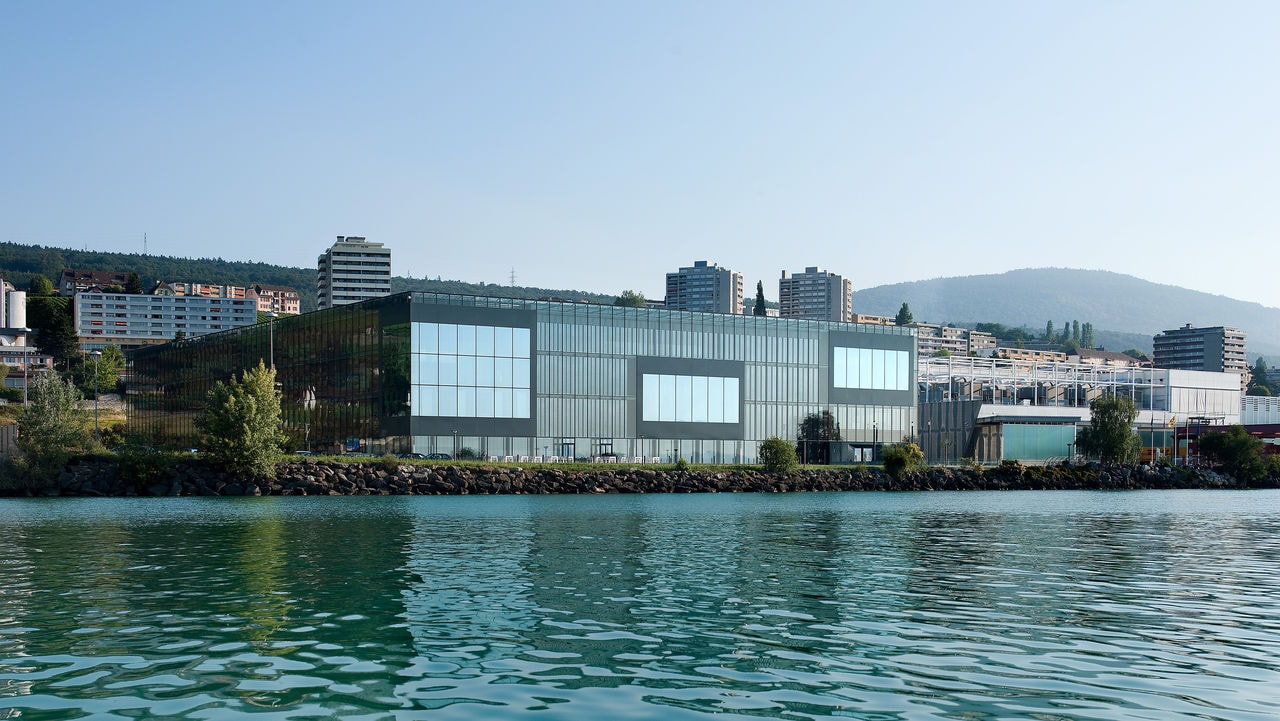The Future of Research at PMI
PMI is transforming, in many senses of the word. We are transforming our industry, we are transforming our products, and we are transforming our business model. These transformations are evident in our smoke-free product portfolio, a range of products developed for adults who would otherwise continue to smoke cigarettes.
PMI’s transformation debuted with a vision centered on phasing out cigarettes in favor of a portfolio of less harmful alternatives to smoking. That smoke-free portfolio has become, and continues to be, important for us from both a business and research perspective. We continue to research and develop scientifically substantiated, non-combustible, and less harmful alternatives to continued smoking, at the same time working to provide adult smokers’ access to better products. Along the way, we’ve developed new and innovative assessment methods, and gained new expertise in device technologies that are useful across industries and applications.
With all that we’ve accomplished so far, there are some people who still don’t believe that our transformation is real and ask: is a smoke-free future really the purpose we are working toward? Yes. Can smoke-free products really have the impact we think they can? Absolutely, the science speaks for itself. What happens when all smokers who won’t quit have switched to smoke-free products? That’s a great question, and one we are prepared to answer.
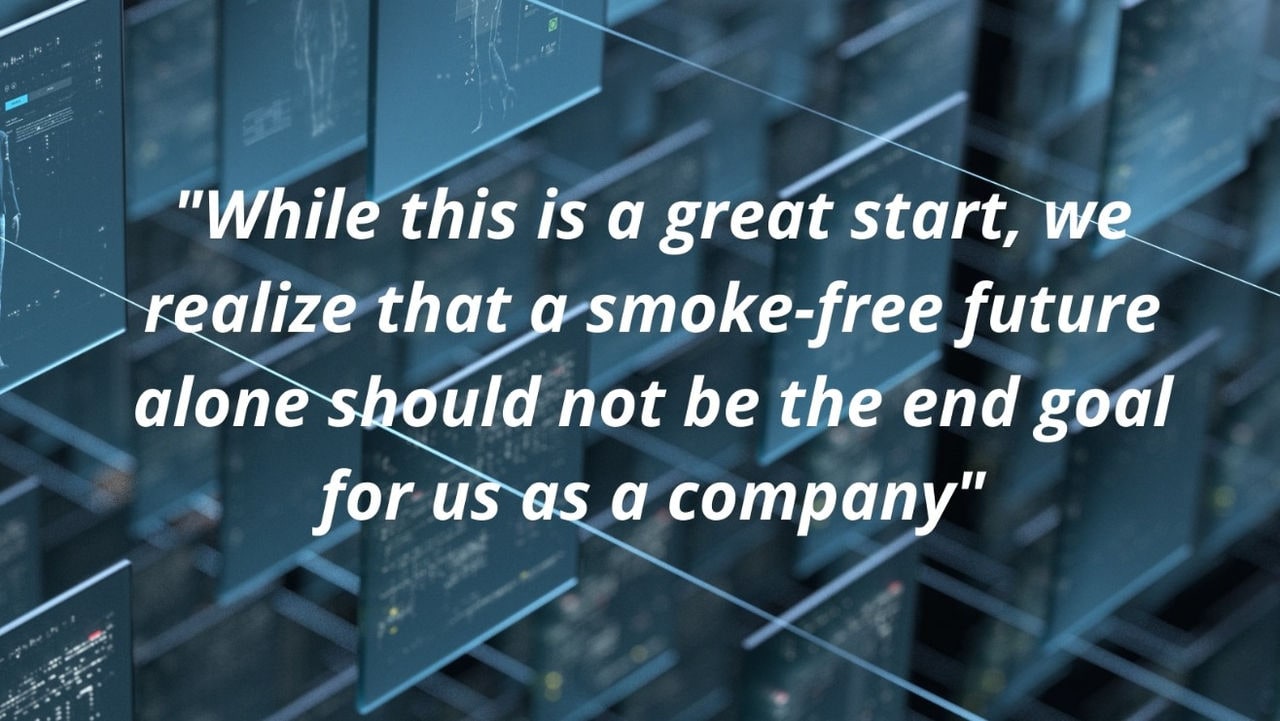
PMI is moving beyond nicotine
PMI possesses significant expertise in product formulation, aerosol chemistry and physics, device technology, clinical research and best in class preclinical safety and inhalation models. All of these position us well to continue our transformation and emerge into new growth opportunities. There are mainly two areas we are looking at expanding our research efforts and growth.
The first growth platform is on respiratory drug delivery, where we can use our expertise in the delivery and scientific assessment of aerosols, as well as our experience in device technology for medical application.
The second growth platform is to move into botanical products addressing benefit areas such as Energy, Sleep, Calm and Focus – again using our expertise in inhalation science and technologies but also plant substrates.
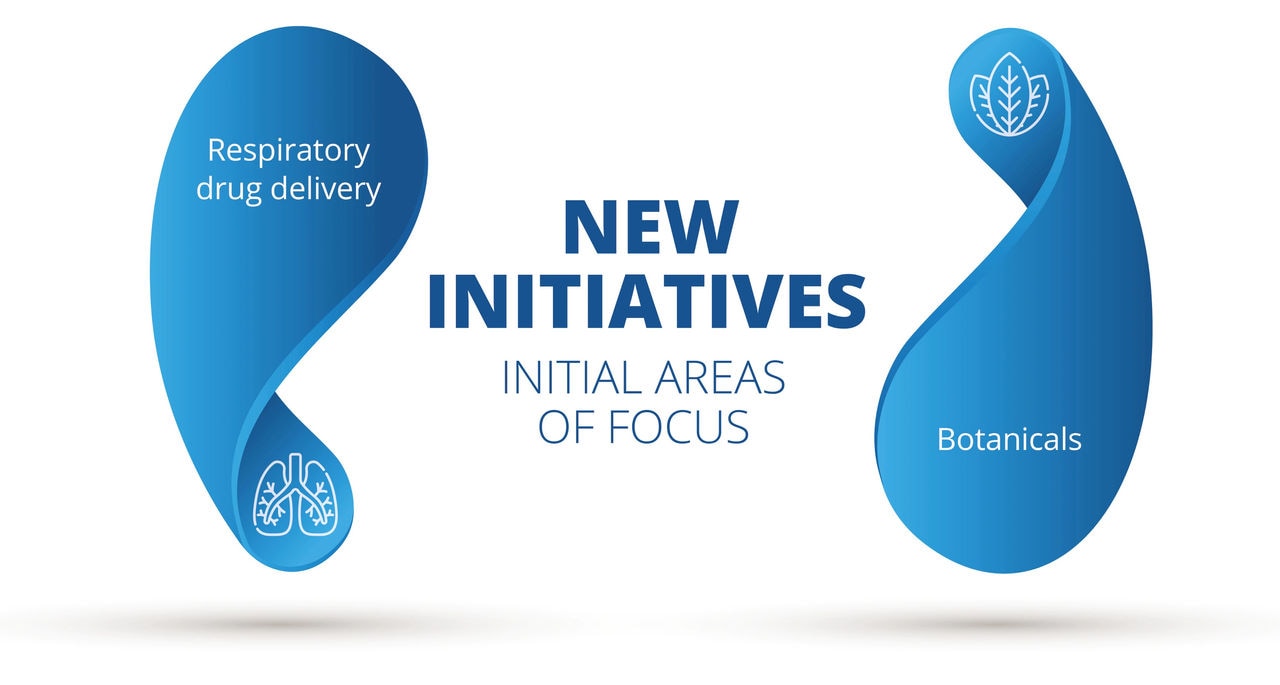
Respiratory delivery is in general a method of delivery that provides consumers and patients with well differentiated products and/or drugs. Many products in the wellness and drug sector, although demonstrating good efficacy, still leave open unmet medical and consumer needs. Two of those unmet needs pertain to the time until someone can feel the effect and the side effects (safety profile) of a given product; both are linked (at least partially) to the route of administration.
For example, when a product is taken orally it takes time for the expected effect to set in. Also, due to the dose needed to achieve the expected effect, side effects may occur. Inhalation as an alternative form of application can offer advantages in both areas due to the faster uptake of the active compound, the potentially lower dose necessary, and higher bioavailability of the active compound achievable compared to when a product is taken orally in the same dose range.
First steps in a new direction
With PMI moving into these new business areas, we have now given the answer to the question - “What is next in PMI’s transformation?” And we have set for ourselves a serious objective: at least USD 1 billion of our company’s revenues will be derived from our new business areas by the year 2025. To reach this objective, we will:
- rely on and expand upon our existing core capabilities,
- seek partnerships with entrepreneurs and companies that have the proper experience and credibility in the relevant fields,
- keep a strong focus on specific benefit and disease areas which we will announce more concretely in the future.
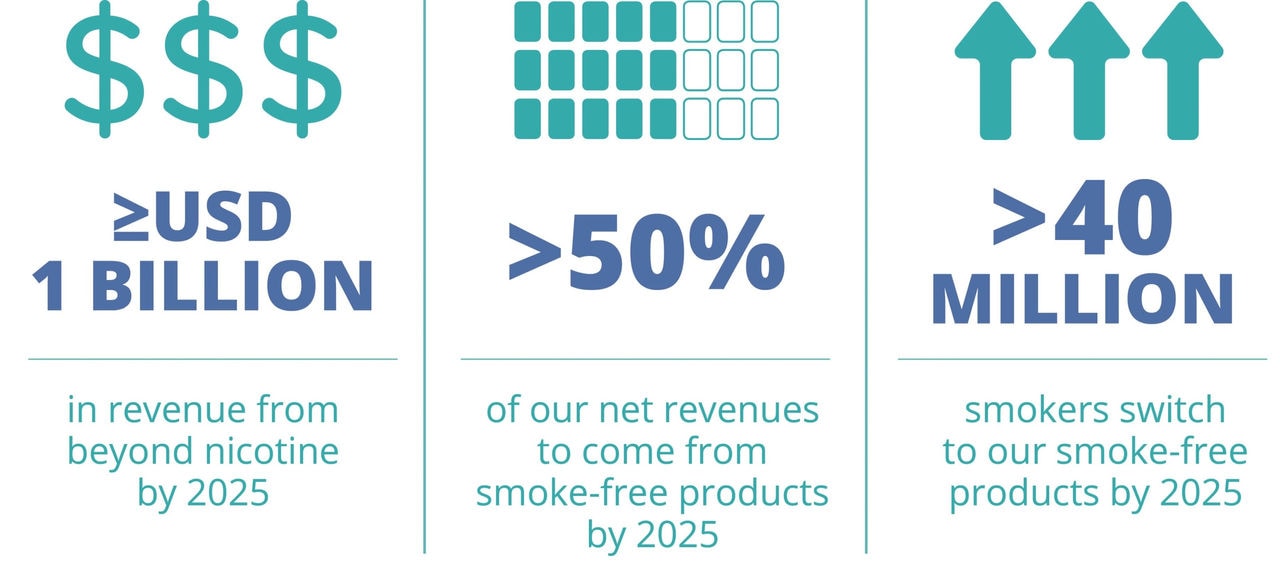
Our future business areas will complement a smoke-free future
Expanding into the areas of botanicals and respiratory drug delivery complements our current smoke-free future objectives for 2025, such as our goal of converting more than 40 million adult smokers to our smoke-free products when they would otherwise have continued to smoke cigarettes.
Expanding into these new product areas certainly gives us additional room to grow from a business perspective, but it also allows us to put many of our areas of research expertise to good use. Those research capabilities are going to carry us through this next step of our transformation.
We have always said that we wanted to truly change the industry – and now we are embarking ourselves into the next chapter of this journey.
Questions & Answers: Dr. Jorge Insuasty's perspectives on new initiatives
Why is PMI working on these new initiatives?
Many researchers in the field of harm reduction have asked us why we are not using our knowledge in aerosolization and inhalable devices beyond the tobacco harm reduction space. We believe that this was the right question to ask, and building upon the research expertise and knowledge we’ve gained from developing and assessing smoke-free products, we are in a really good position to work on, for example, respiratory drug delivery.
This method of delivering a drug is not as well developed as taking a pill or drinking a syrup. But respiratory delivery can become important for society because it has advantages over the traditional medication delivery methods. Medicines delivered via the respiratory tract allow a rapid onset of the drug effect and potentially reduce side effects due to the lower dose that might be needed for example compared to taking a pill. Similar for botanicals: we know how to work with plant substrates. We also know how to aerosolize and assess these kinds of products. In short, we are leveraging the areas where we have strong research and technology expertise to strengthen our business while making a difference for society.
Is now the right time to introduce these new directions?
There’s no time like the present to plan for the future. We have a lot to offer in these new areas, and it would be inconsistent with our scientific mission not to use our knowledge and embark into new business areas.
With all these new initiatives, are you still serious about transitioning to a smoke-free future?
Absolutely. We’re committed to work toward phasing out cigarettes completely, what we call our smoke-free future. We have expressed the goal of reaching more than 50% of our net revenues by 2025 from smoke-free products. That really speaks for itself, but then we also have our goals of switching over 40 million adult smokers to our smoke-free products. And then we even have shared with the investor community our ambition to achieve by 2025 at least USD 1 billion in revenue from beyond nicotine products. Those goals, and the progress we’ve made so far, only makes sense if we’re serious about a smoke-free future. And we are.
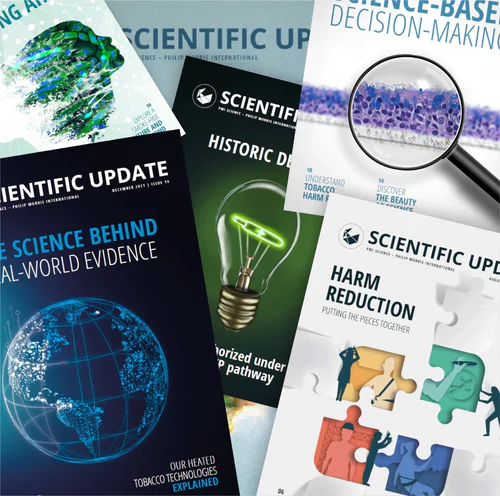
Read the Scientific Update magazine
The Scientific Update magazine is focused on PMI's research and development efforts, milestone studies, industry regulations, and more. View the latest issue, or read the articles online.

